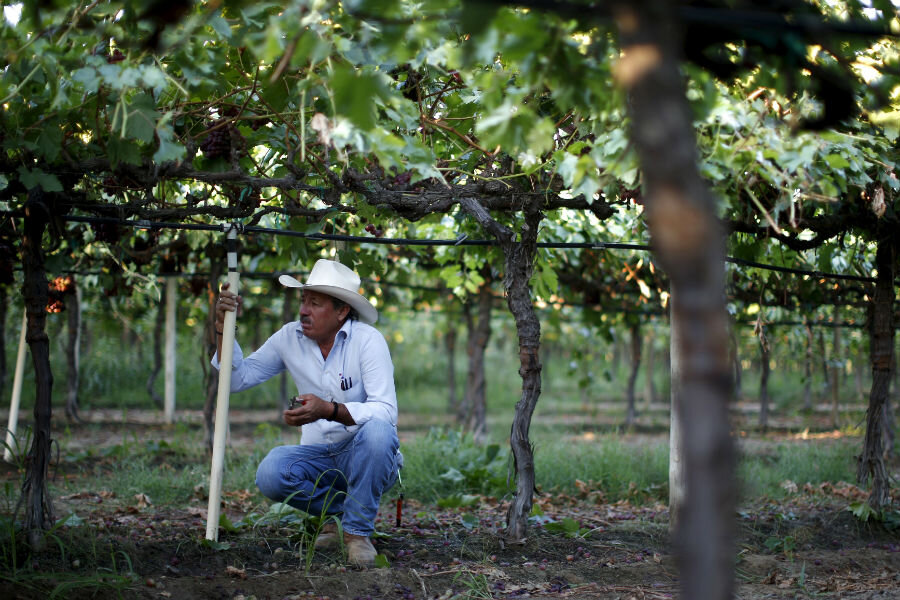Drought in California: How farmers are coping
In water-conscious California, farmers are eschewing vast harvests of fruits and vegetables for crops that fetch more money on less land. The aim for most farmers is to plant crops that need less water, but the most lucrative crops – such as almonds and alfalfa – need lots of water, a fact that presents a challenge to Californians who have already endured four years of drought.
Farming in general accounts for 80 to 90 percent of the nation’s water consumption, and alfalfa and almonds, two of the top crops in California, have been making headlines due to the amount of water needed for each crop to grow.
California grows four-fifths of the world’s almonds, the majority of which are exported abroad. Demand has pushed the price up to more than $4 a pound in April, a record that has motivated farmers to route precious water to the profitable, but needy, crop.
Almonds use enough water to supply 75 percent of the state’s population, says Carolee Krieger, president and executive director of the California Water Impact Network, in an interview with Bloomberg.
Alfalfa, the other thirsty crop, is considered a "superfood" for livestock and dairy cows, two major sources of revenue in California. According to Mother Jones, alfalfa accounts for the most water use in the state, but plays an important role in supporting the Golden State's dairy industry, the largest in the country.
Farmers who are are opting out of planting thirsty crops are switching to nurseries or planting unusual crops like pomegranates, according to NPR. Eric Larson, from the San Diego Farmers Bureau says in an interview with NPR that dragonfruit is becoming an attractive new option. "I guess I could best describe it as a cactus with fruit on it. [Farmers] are getting a lot of money per pound."
He points out that not long ago, avocados were a specialty crop.
"And, it was hard to sell those things. They were called alligator pears. People didn't know what they were," says Larson. "They got two to three cents a pound for them." But, he says, the avocado's popularity exploded as the country's Latino population grew, and more and more Mexican restaurants opened.
Daniel Sumner, an economist at the University of California, Davis, says, in an interview with NPR, that the drought is intensifying a trend that has been unfolding for centuries.
"The context is that what we produce in California has been changing for 200 years," Sumner says. “You go back 140 years ago, California was the second-biggest wheat state in the country. The Central Valley was dry land, wheat farming. We were second to Kansas."
Even with a change in strategy, Californians are having to drill deeper and deeper for water, as the drought persists and the water table drops to record lows. Water scarcity is making even small crops unsustainable.
Richard Howitt, a farm economist at the University of California, Davis, says the drought means the state’s farmers will have to permanently reduce water usage.
“California needs to rebalance its agricultural portfolio in response to this drought,” Howitt says in an interview with Bloomberg. “You will see more fallowing of land. We have to reduce our water footprint.”






